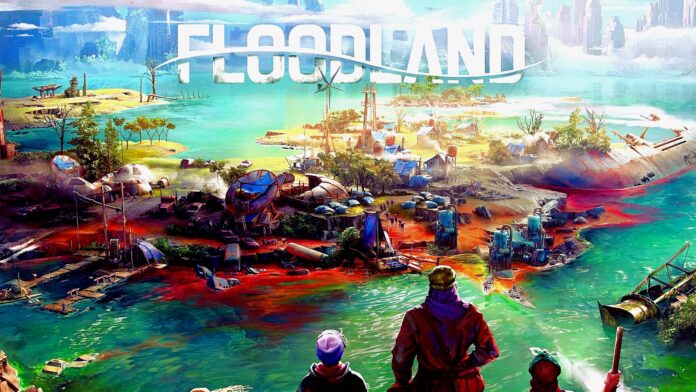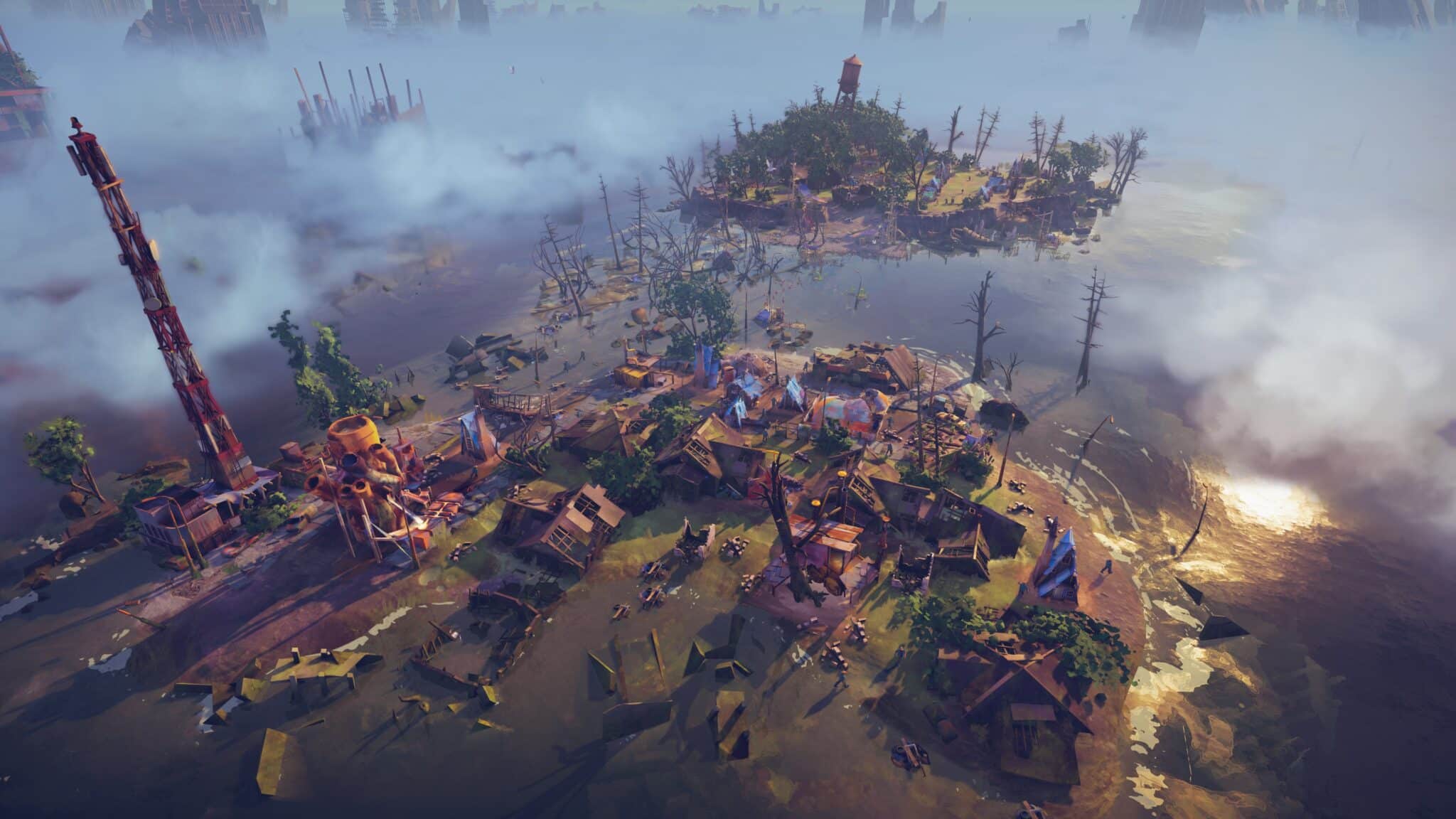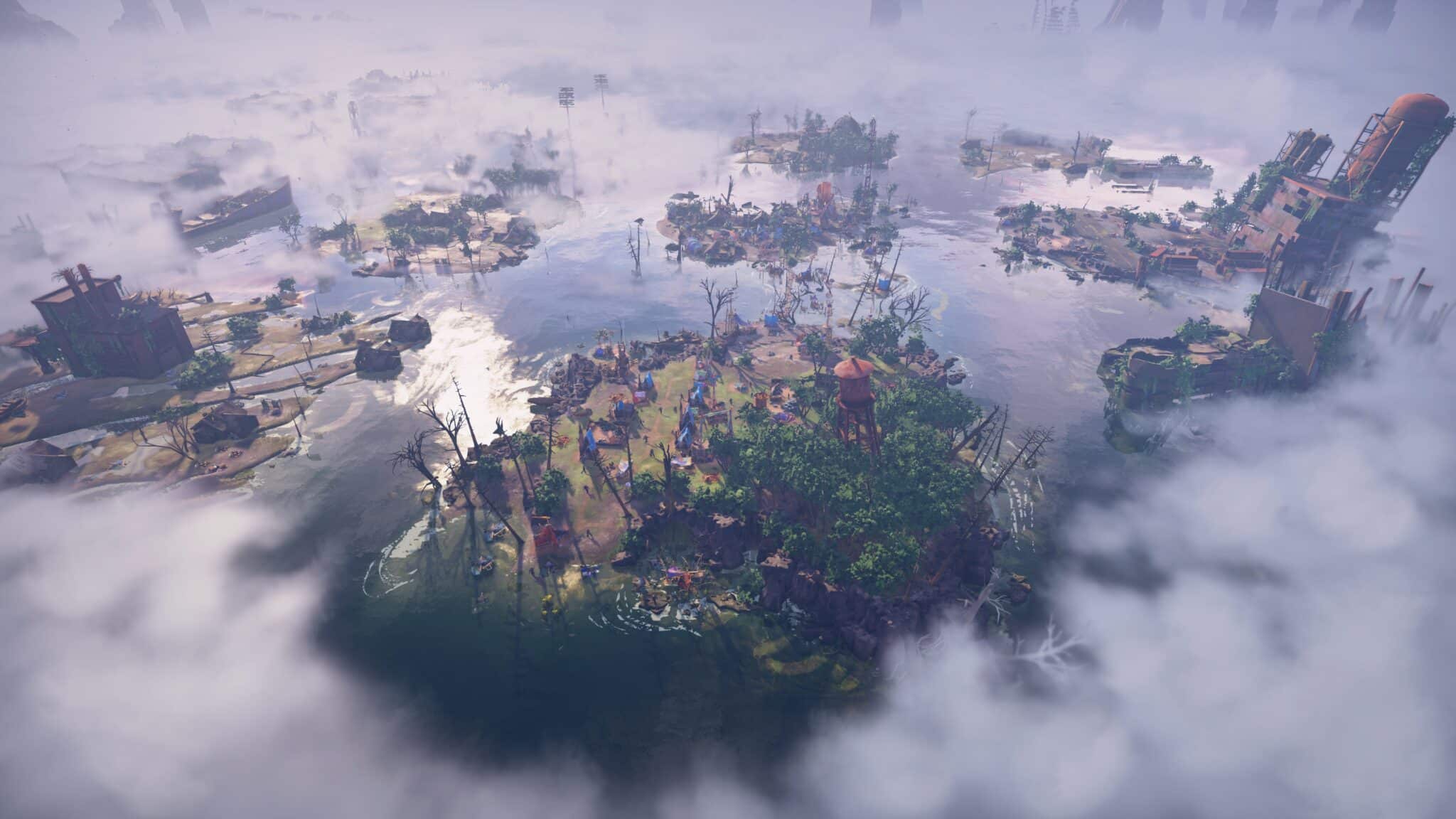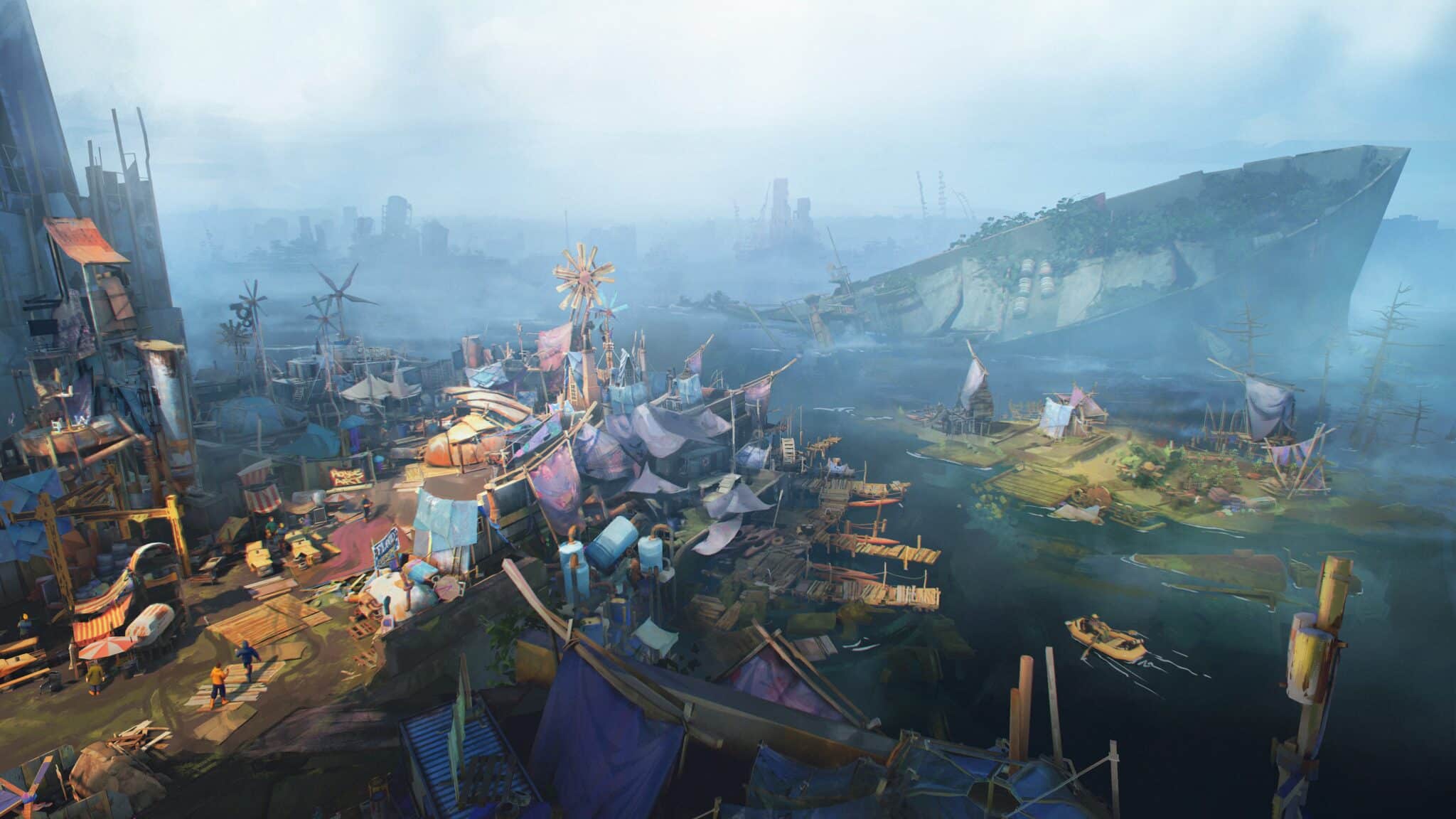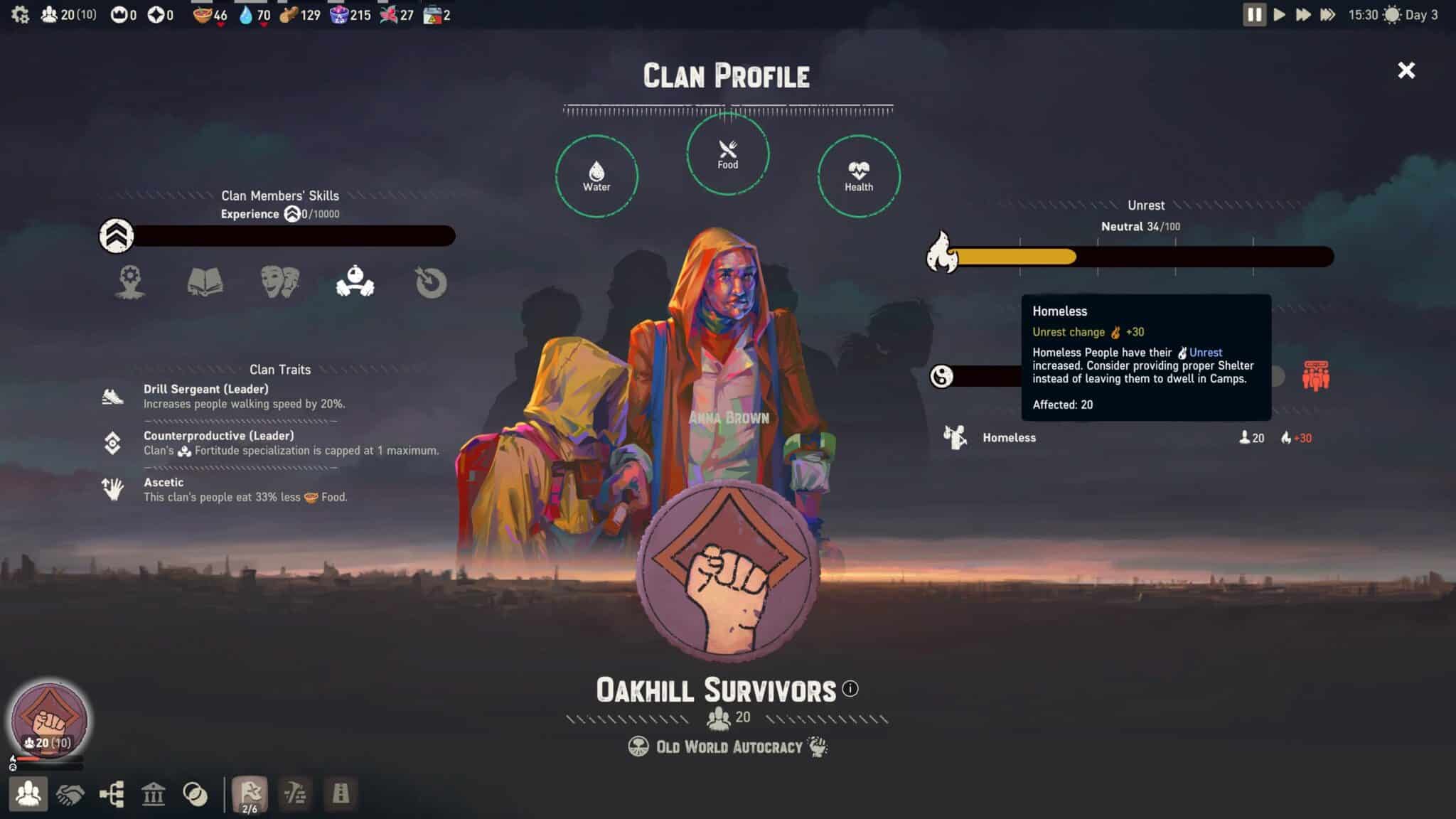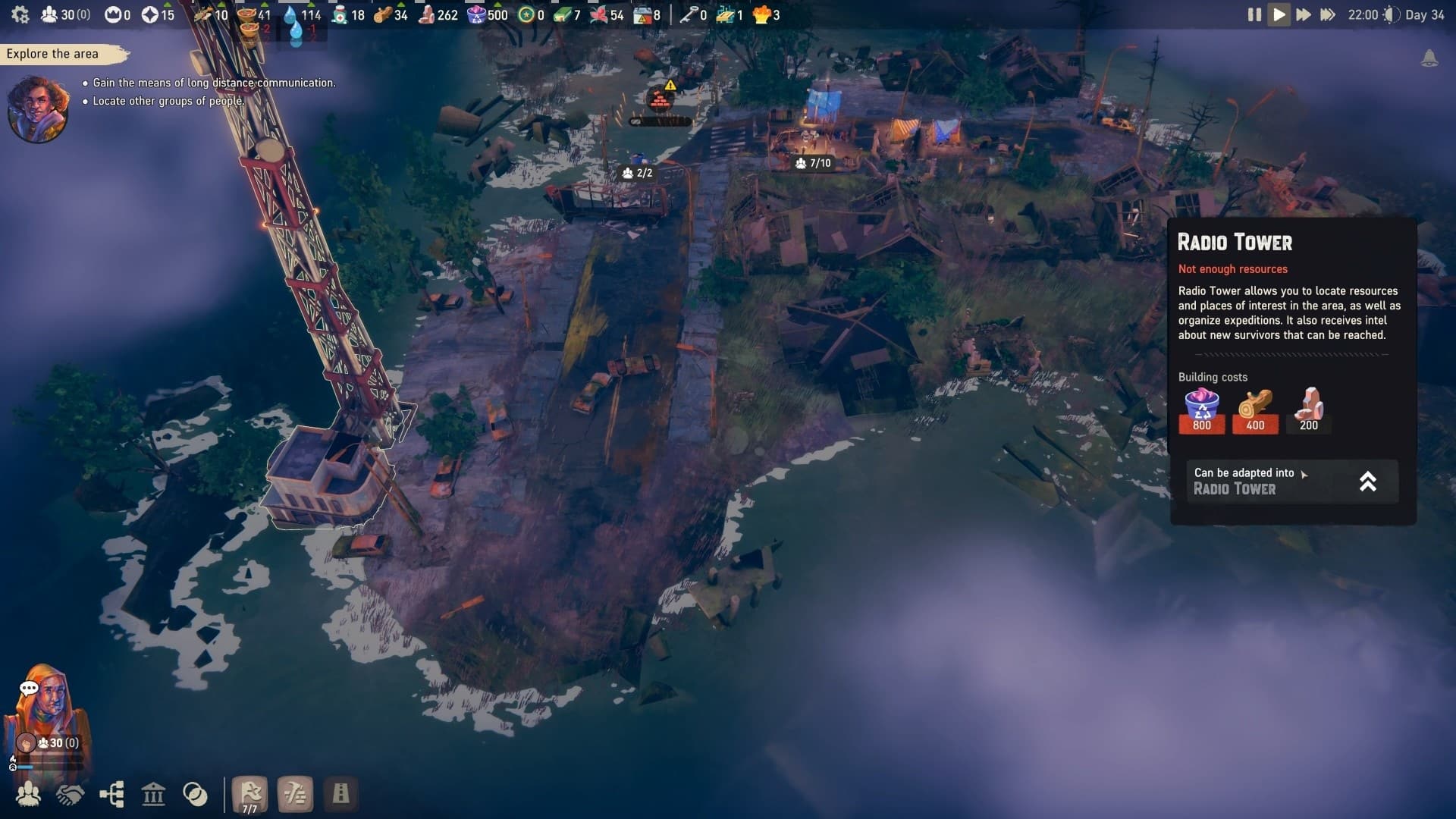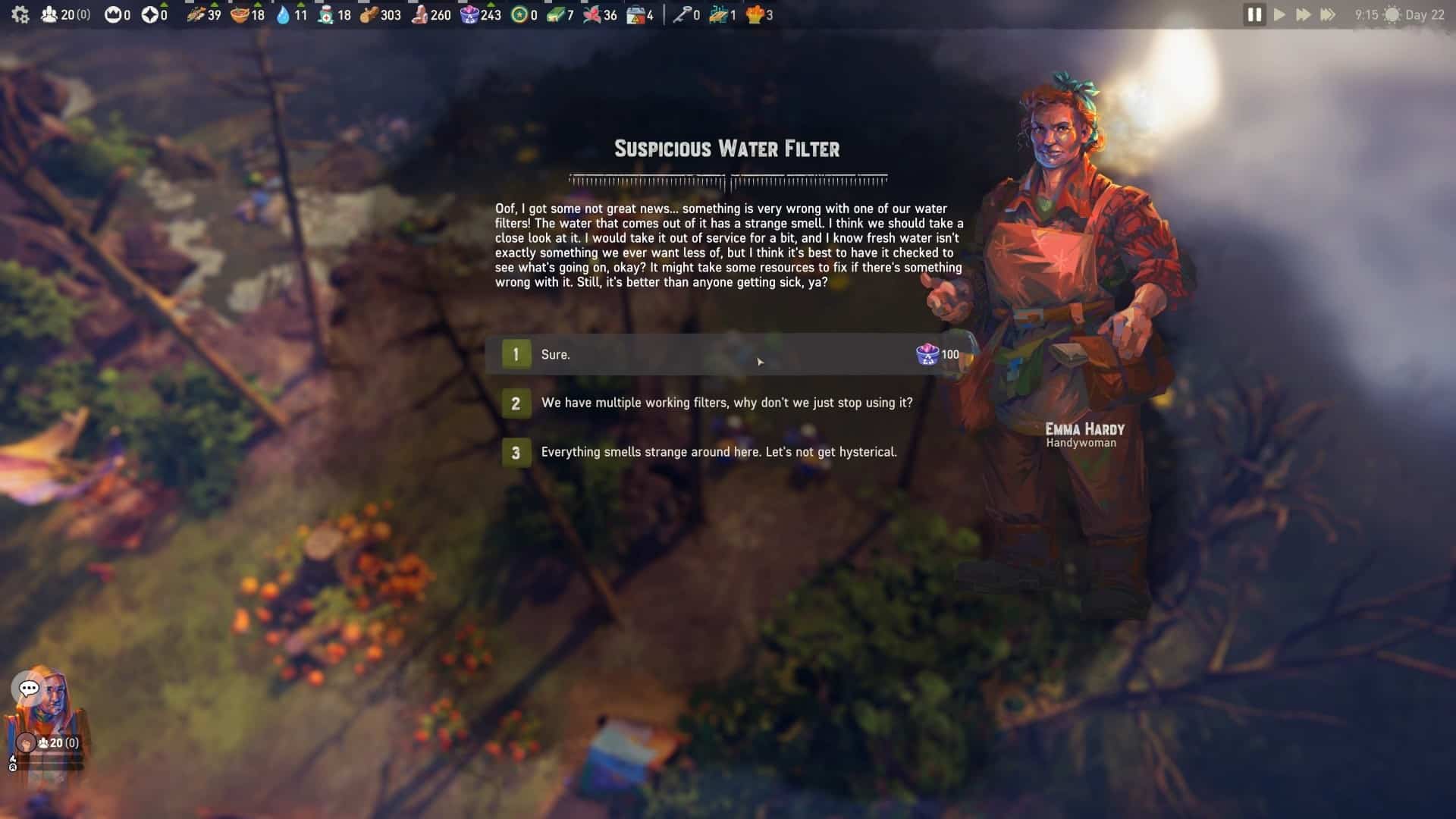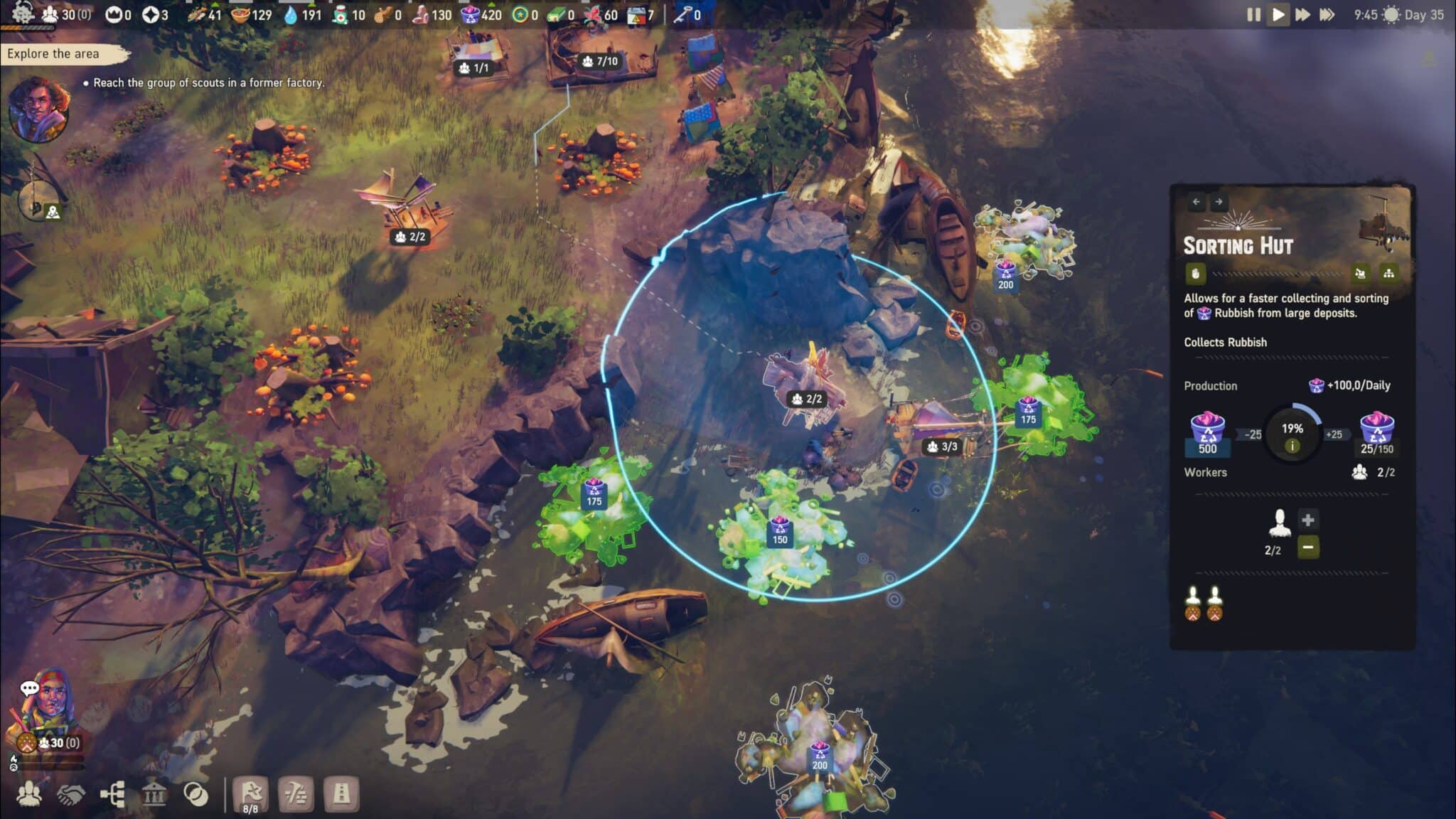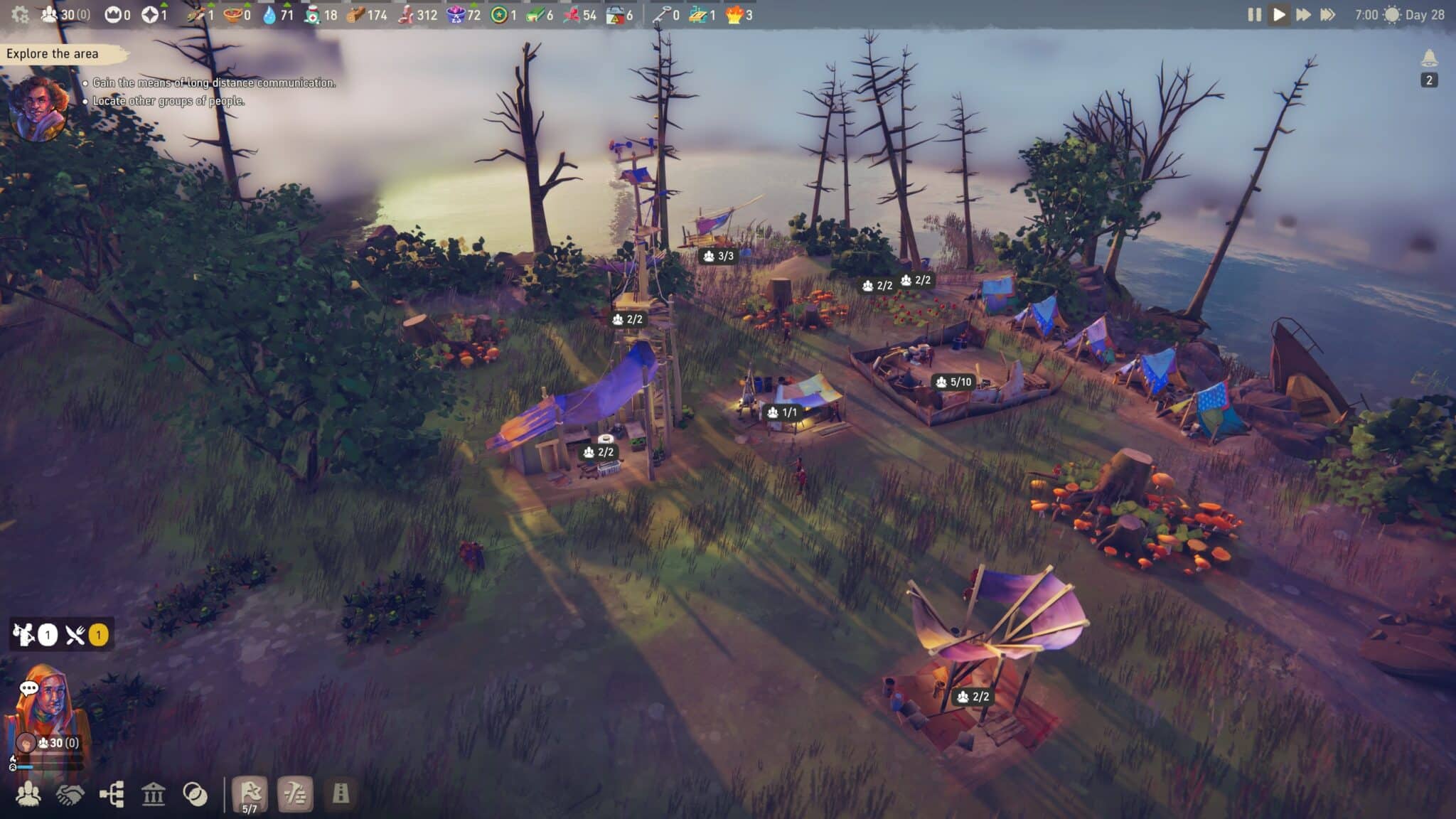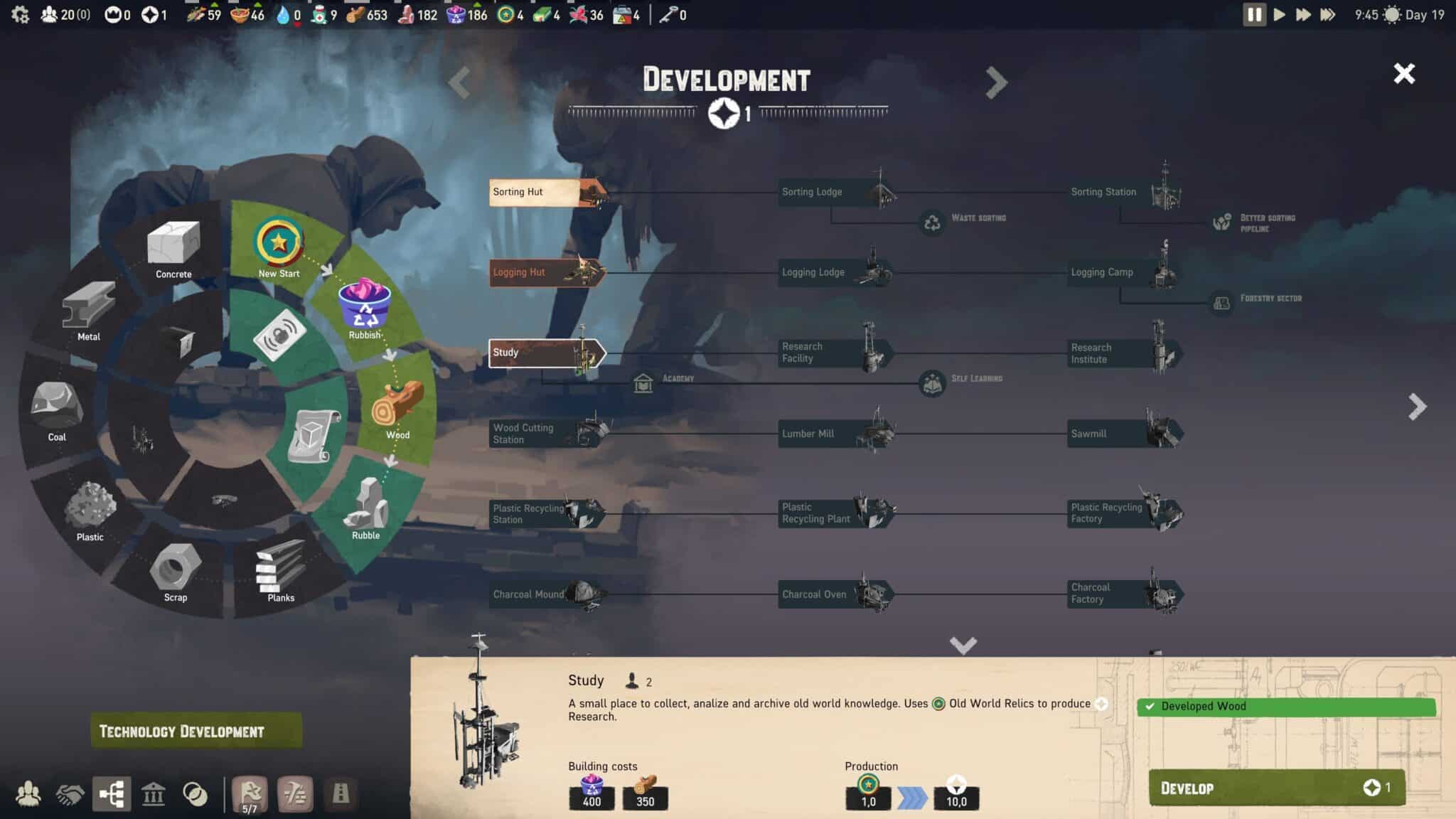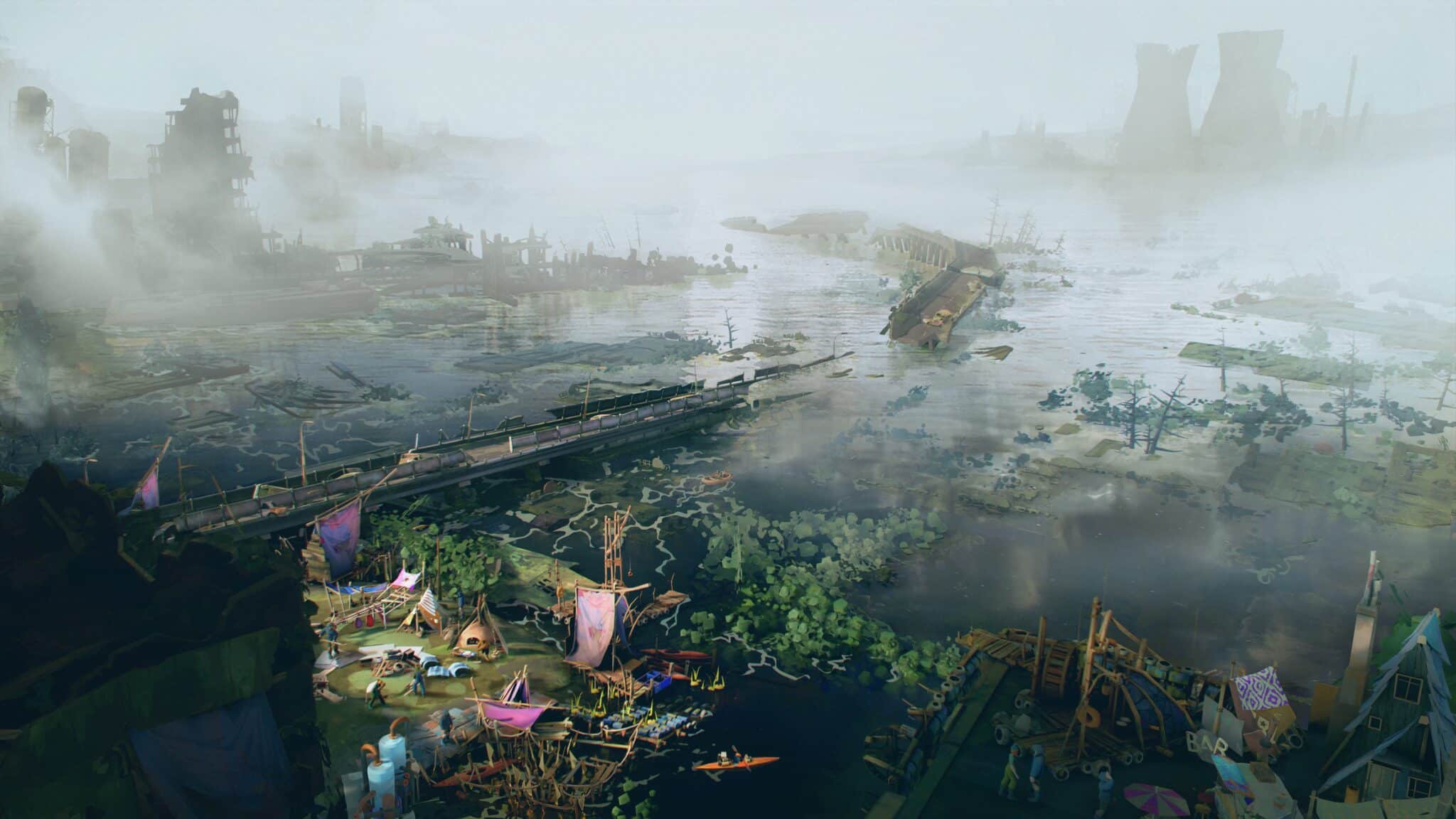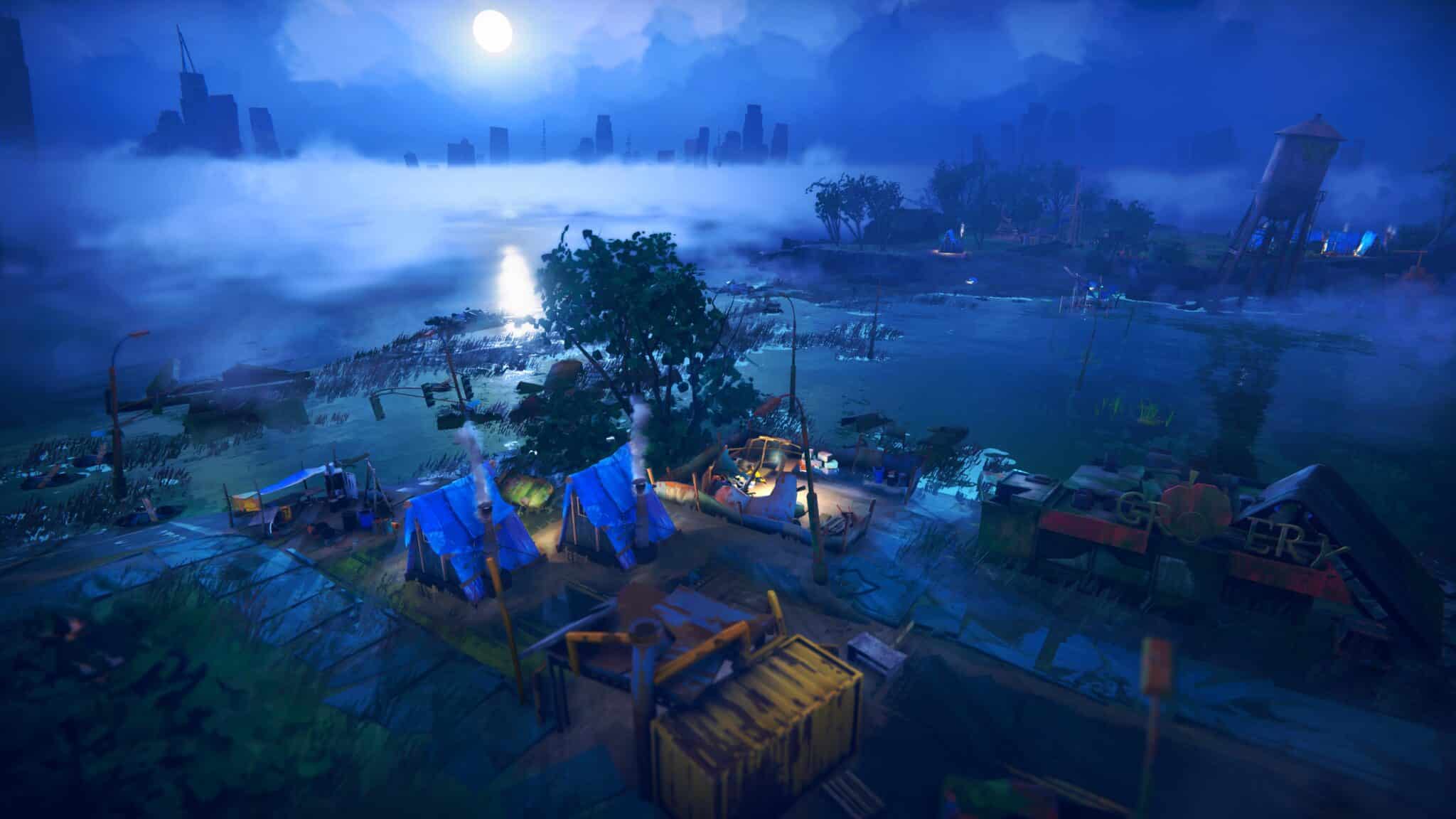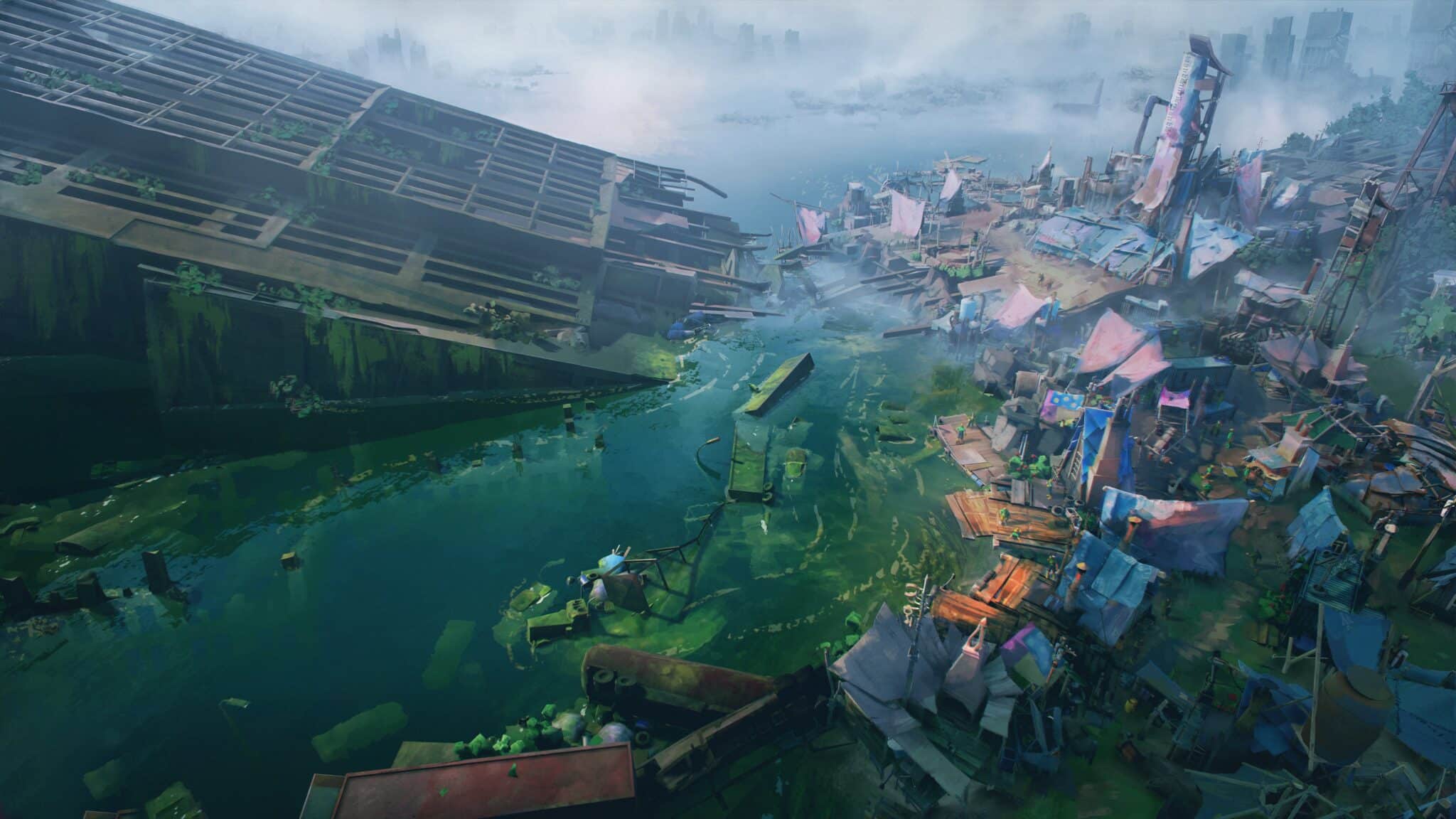Fallout in Wet: Floodland is set in an unusual post-apocalypse. Why atmosphere has come before gameplay so far is revealed in our preview.
Mankind has really fucked up in Floodland: The world is almost completely flooded after the climate catastrophe, and the previously known civilisation, including the internet and other means of communication, has perished. For the remaining people, the first thing to do is survive before they can even think about rebuilding.
The demo of the rebuilding survival game lets you try out one of four different clans for a good fifty days and sends you on a search for lost technology in an abandoned nuclear power station.
Mankind has really fucked up in Floodland : The world is almost completely flooded after the climatic catastrophe, the hitherto known civilisation including internet and other means of communication has perished. For the remaining humans it is first a matter of survival before they can even think about rebuilding.
(The demo of the rebuilding survival game) lets you try out one of four different clans for a good fifty days and sends you on a quest to find lost technology in an abandoned nuclear power plant.
Little spoiler: You will definitely not achieve this long-term goal in the demo, there is not enough time. But you will certainly create a useful foundation for your clan, from which further exploration of the game world will be easier. For this is also part of Floodland, in addition to survival, research and construction, and you will always be making decisions about current events.
Dive into the climate catastrophe
A total of four different clans are available at the start of the game, whose views range from libertarian to authoritarian and from forward-looking to totally traditional. These views also determine how the settlers react to your decisions and the buildings you construct.
Research expands your building options and unlocks more advanced technologies, while your clan also learns new skills through increasing experience. Random events bring variety into the game, and the scenario background story of the demo gives you a feeling for the game world and the reality of life of the people in it.
This everyday life looks quite picturesque at first glance: The morning sun is reflected on the water surface, a leaning water tower rises on a small hill, eager settlers are already picking berries and mushrooms so as not to be left with an empty stomach at breakfast.
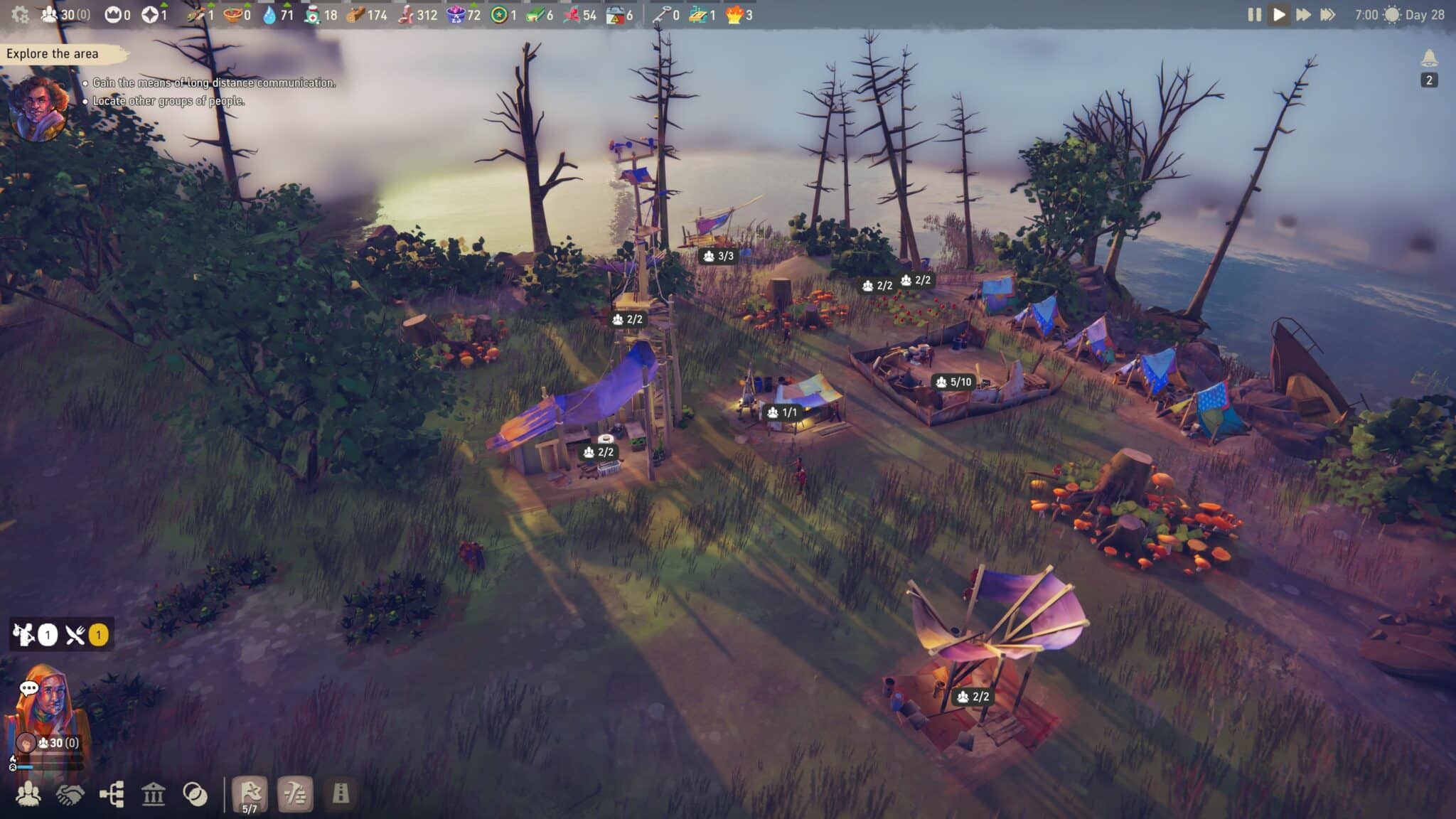
Even half-sunken shops, rusted cars and other ruins make it clear, even without many explanations, that the former world is irretrievably gone and all survivors have to get used to this thought.
Even the comments of your advisors on current events repeatedly provide small snippets of atmosphere to the never-ending struggle for survival. And only in a few places will you find usable technology, such as radio towers, with which you can bring back a little comfort to your clansmen and connect with other people.
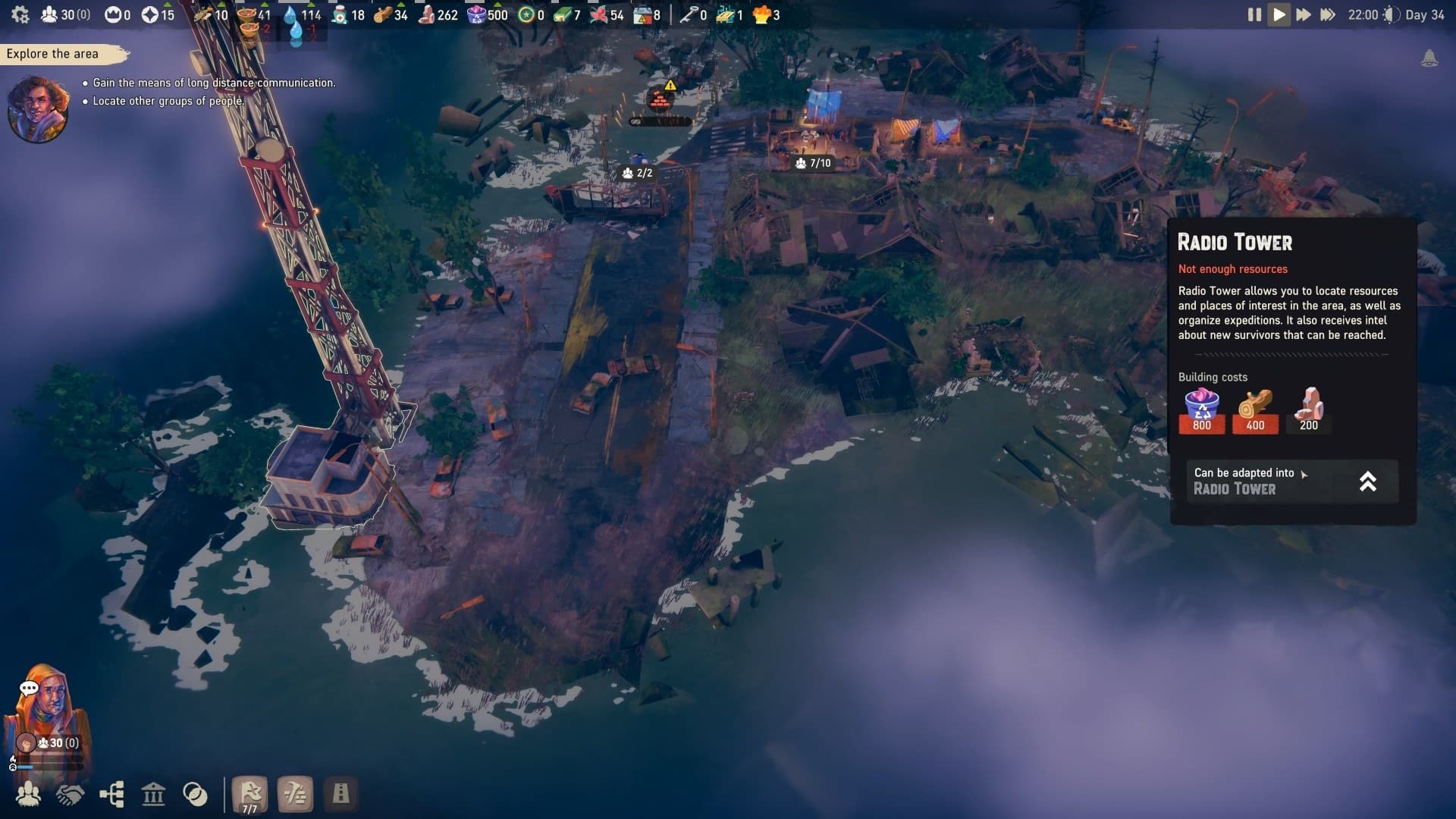
Survival Exploration
After starting on a small island with enough supplies for the first few days, you gradually explore the surroundings, which are initially still hidden under grey fog. Once your scouts have looked around, the corresponding area is revealed, revealing abandoned buildings, resources, interesting locations and more. In Floodland, exploring the game world is not a teasing extra, but rather essential for survival.
It is the only way to find new places where you can uncover relics and books from the Old World before the climate catastrophe. These serve as a basis for research; only through research will you unlock better technologies. Especially at the beginning of the game, you will benefit from finding other survivors who you can take into your group, as labour is always scarce.
In new regions there is also the chance of finding (more) favourably positioned renewable resources. The more of them there are in the catchment area of a manufacturing building, the smoother the gathering and crafting will run later on.
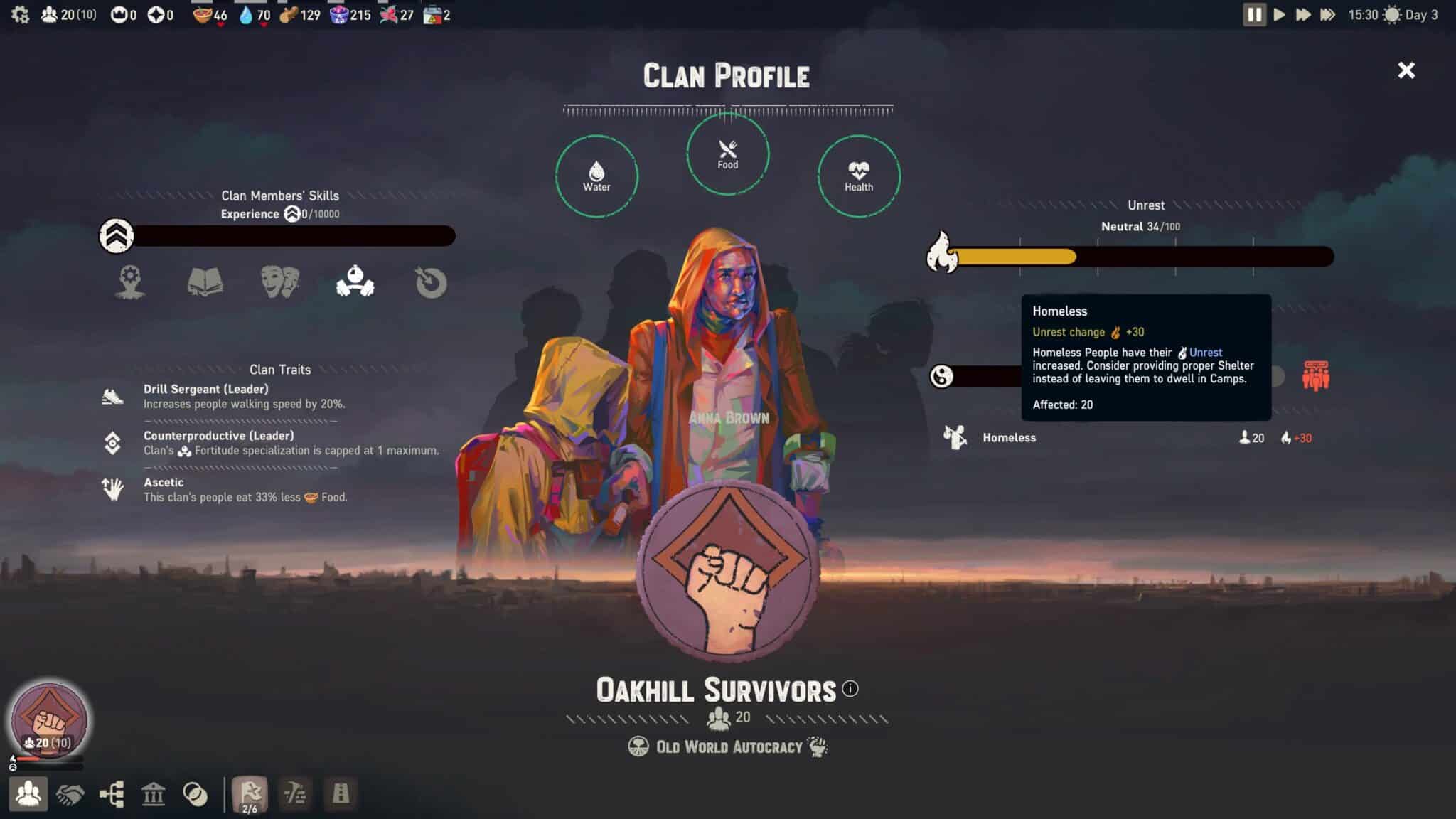
Events and decisions
Before you get too bogged down in the daily routine or lose yourself in exploration, small events and the resulting decisions bring variety into the game: Sometimes one of the filters of your water extraction plant gets stuck, your breeding molluscs get sick or scouts find a white pigeon and want to keep it as a symbol of hope. However, if you decide against your clan”s agenda, your people can get really pissed off and receive temporary negative opinion buffs.
If they were already in a bad mood before because of lack of accommodation, bad food and other factors, this will quickly lead to real problems or even your dismissal. In the demo, the density of crass decisions was not particularly high, but the system still shows potential and could produce even nastier moments the more difficult the general situation is – Frostpunk sends its regards here! For this to happen, however, the main story, including events, still needs to pick up speed, the story around the power plant search was still rather anaemic and progressed only slowly.
Here Floodland is still draining
Generally, Floodland”s demo version already offers a good insight into the game in progress, but there are still a few rough edges to be polished off before the release on 15 November 2022.
Despite the tutorial, you won”t get far if you don”t read the descriptions of the individual buildings. Otherwise, you will miss out on some important information – for example, that building a new camp expands your radius of action. Or that scouts can move across water without the invention of the rubber boat if you instruct them to build a camp on uncharted land.
The clans, meanwhile, played more or less the same except for a few details, which was certainly also due to the fact that I usually had the production and supply on course quickly and thus there was not much frustration factor in the first place. In higher difficulty levels, you quickly run out of manpower and have to move people from production or research to processing and so on, as needed.
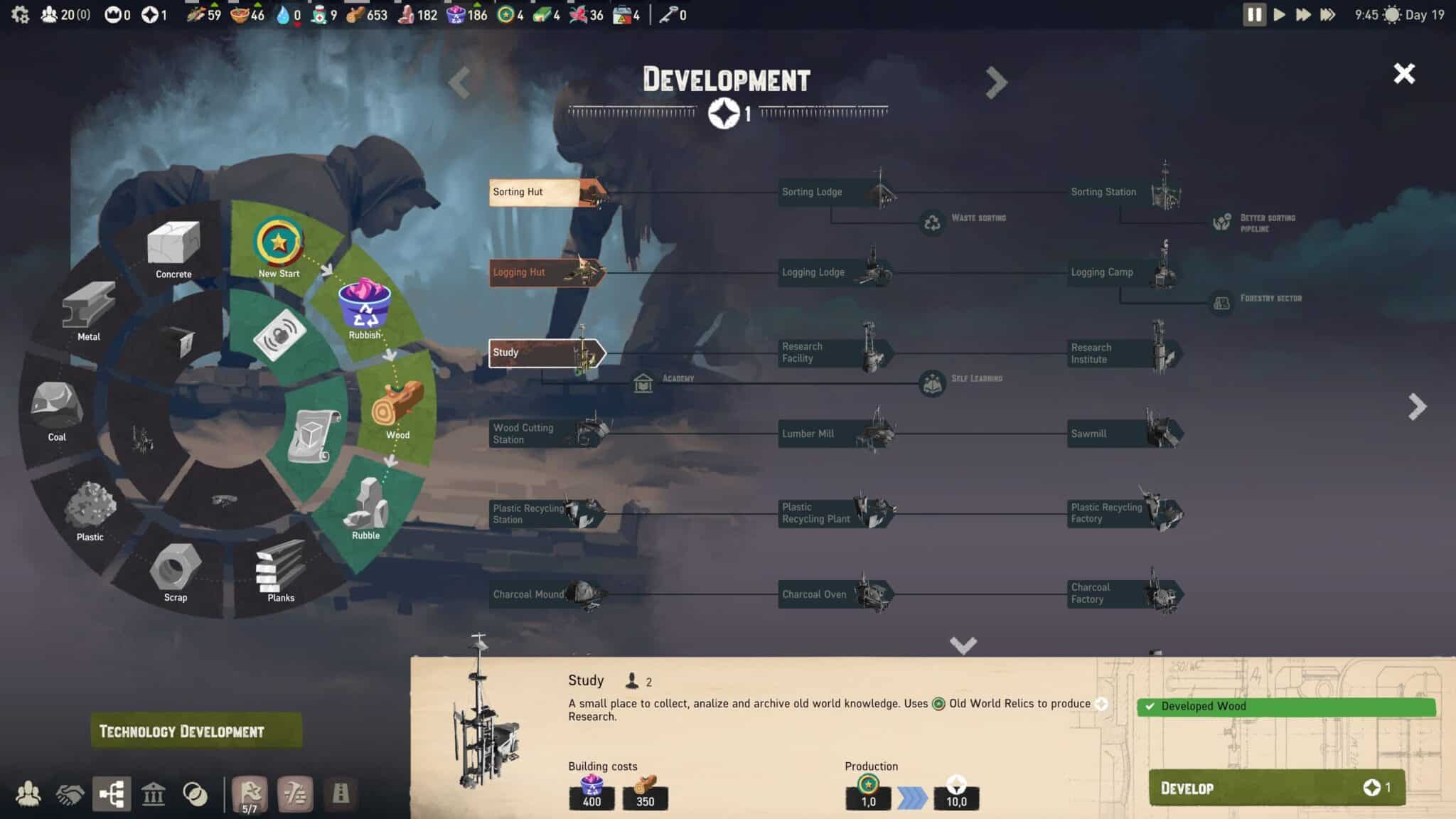
Because there is no overview page listing all the buildings and the people who work in them, you will always have to manually remove workers from one place and reassign them to another. This is not a problem with a small camp, but the further your buildings are spread out on the map, the more annoying and confusing it becomes.
It is also not possible to zoom in really close to the houses and people, so you can neither look at the details of the buildings nor watch your people at work. There is also no building priority setting, so far buildings are built in exactly the order in which you have placed their plans on the map. If you need to add something else in between, you can only delete all the other planned buildings and plan them again later.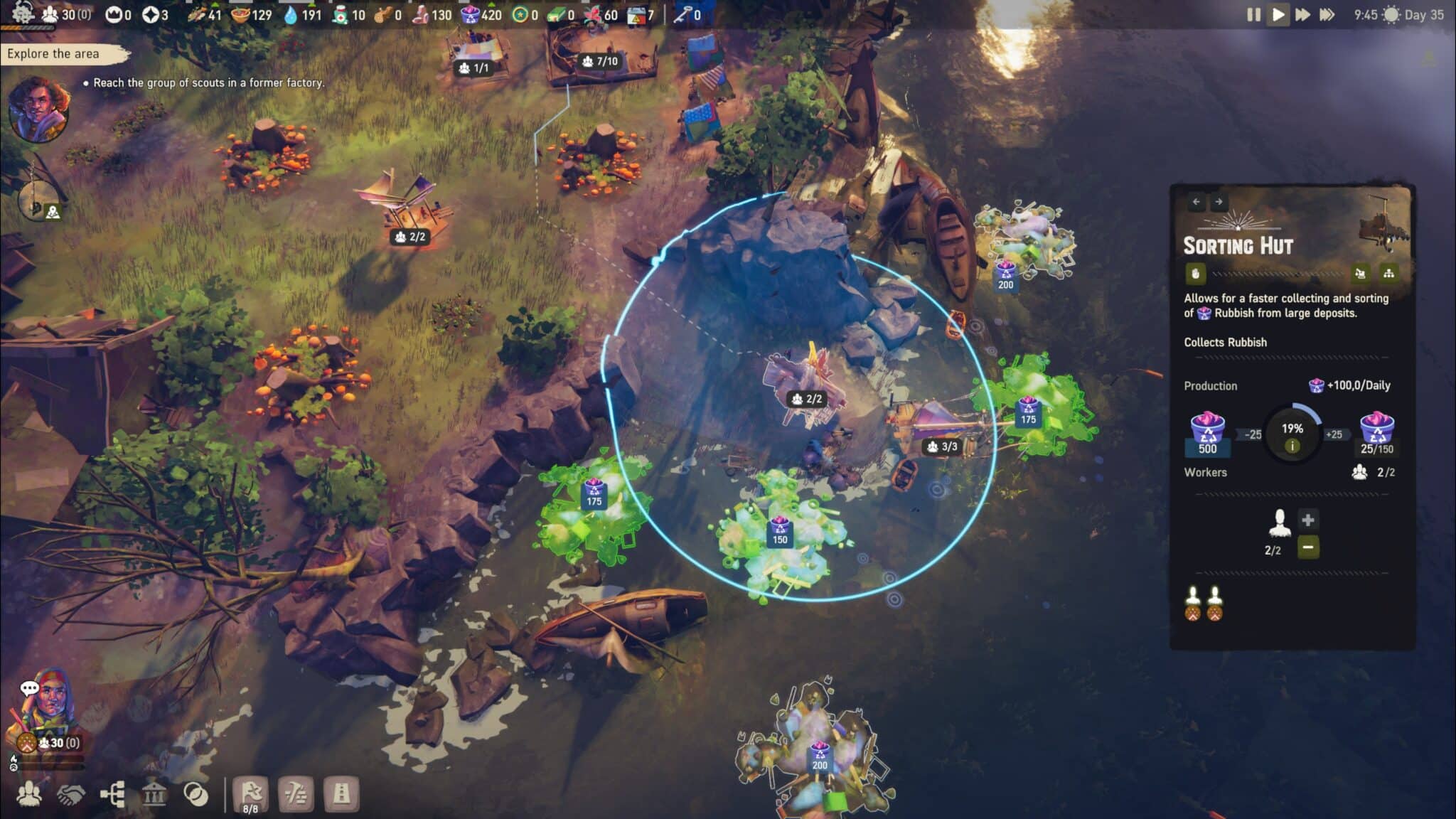
It would be especially practical if we could also move the mining radius of the resource buildings in the future. At the moment, the respective building always forms the centre, but the terrain likes to prevent really efficient placements. Endzone: A World Apart shows how it can be done better. Since Floodland can be paused, however, it can of course also be played without the aforementioned convenience functions, but tinkering and managing remains considerably more time-consuming without them.
Editorial conclusion
Kevin was enthusiastic about Floodland after his play session at gamescom, so I was sure that I would feel the same way – I really like the game setting and worldbuilding. But the game hasn”t really clicked with me yet. That was certainly due to the very linear course of the demo. The storyline gave me a clear idea of each step and only unlocked new options at certain points, so I couldn”t really try out much. How well Floodland will work in a free game with procedurally linked land parts and how varied the story and events will be, I can”t judge yet.
But the potential is there in any case and exploring it is really fun, the sunken world is really nicely built. I”m curious to see what challenges await me and how much I”ll start spinning when I get stuck in several places at once. The highest difficulty level is challenging, but with a little practice it can be done, at least in the demo – can it please be November soon so I can continue? By the way, my cat Flash is a Floodland fan: since I didn”t have to make any hectic movements and could control the game entirely with the mouse, he spent almost the entire game time lying on one of my arms and getting plenty of cuddles!

